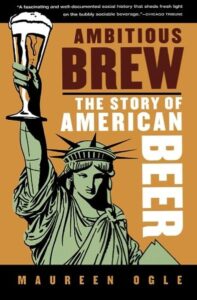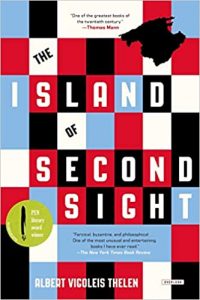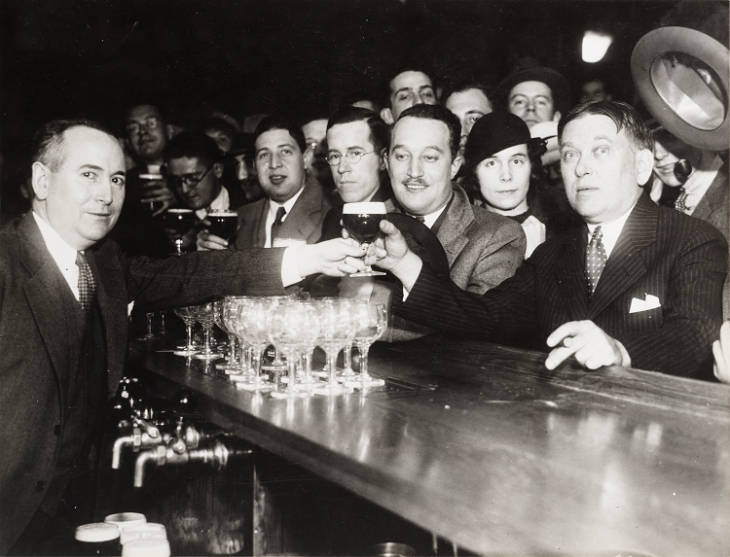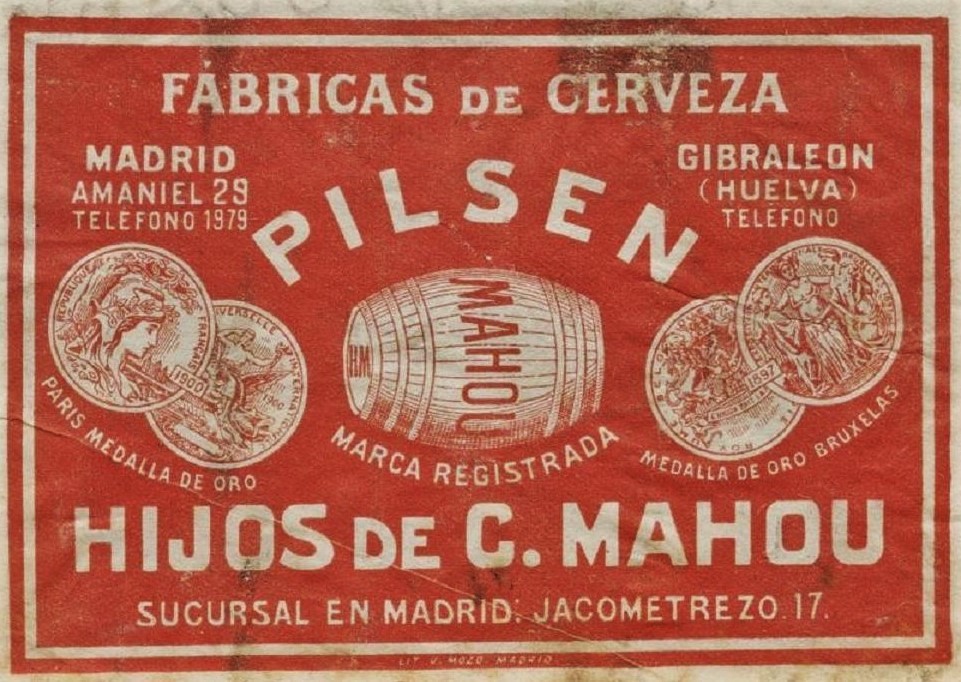 Portions of the following have been deployed previously in this space.
Portions of the following have been deployed previously in this space.
Last evening I promised a colleague that quite soon I’d recall the name and author of a must-read book about beer in America—and before the snark starts, at the exact point of memory loss I’d consumed only two low-gravity American beers, so perhaps advancing years are more to blame.
Here it is: Ambitious Brew: The Story of American Beer, by Maureen Ogle.
The middle 2000s were years of retrenchment in the revolutionary struggle for better beer. The “microbrew” boom of the late 1990s receded during 2000-2002, the same period when the dot com bubble popped.
To many observers at the time, it seemed that better beer had been exposed as a fad, rather than a trend. I was never among the naysayers, and in my mind the “craft” beer explosion of the two-thousand-teens through the present day has served as malty-sweet vindication, although the now ubiquitous India Pale Ale category embraces the bitter side of the flavor spectrum to the exclusion of so many others, and this is an ongoing annoyance.
Pendulums, and all that.
Ogle’s book was published in 2006, and is to be viewed as a summary of American beer history prior to the contemporary “craft” blitz, the sheer scale of which she didn’t see coming, although in fairness very few among us foresaw the intensity of the impending explosion.
Her book is a solid introductory text, entertainingly written, and covering the major American beer history themes: Colonial upbringings, German immigration, the triumph of lager, Prohibition, the recovery of brewing amid major post-war socio-economic changes, and finally a gradual grassroots revolt against conformity, beginning in the 1960s and coming to fruition in the 1990s.
As an interesting sidebar, Ogle points to a seldom discussed aspect of traditional American brewing’s post-WWII decline and fall: the unpredictability of generational family ownership. In short, by the time the brewing barons passed the baton to their third and fourth generations, notable increases in chaos and derailment occurred; some companies made it through successfully (Yuengling, for example), but successions proved calamitous in many other instances.
Ogle’s excellent book takes American beer to the micro/craft era, and then Tom Acitelli’s equally wonderful The Audacity of Hops brings us closer to 2023. I highly recommend both.
—
 It is forever difficult to gauge “my favorite this” and “most influential that,” because one must allow sufficient time to pass to establish context, and human beings tend to be deficient in qualities such as patience.
It is forever difficult to gauge “my favorite this” and “most influential that,” because one must allow sufficient time to pass to establish context, and human beings tend to be deficient in qualities such as patience.
However two years is enough for me declare an addition to my “best of” reading list: The Island of Second Sight, a novel written by Albert Vigoleis Thelen (1903-1989), who was German by birth but opposed Nazism throughout his life.
Thelen’s work is a fictionalized account of the author’s self-exile on the Spanish island of Majorca (Mallorca) in the 1930s, hailed by none other than his fellow German writer Thomas Mann as “one of the greatest books of the twentieth century.”
Mann’s assessment is accurate. In all respects the novel is a self-deprecating, digressive, tragi-comic and thoroughly entertaining account of life and death amid the gathering storm clouds presaging the Spanish Civil War and later, World War II.
What does this have to do with beer?
I’m glad you asked.
In Thelen’s novel, the chronically underemployed but well-educated and multilingual narrator accepts an occasional position as tour guide, greeting boatloads of German tourists and herding them past the island’s must-see points of interest.
More than once, certain of these boisterous visiting Germans, almost always males in thrall of Hitler, denounce the state of Spanish lager, demanding to be told exactly where a thirsty man could get a decent beer thereabouts.
Immediately I was reminded of Ernest Hemingway’s Death in the Afternoon, Papa’s acclaimed book about Spanish bullfighting. It was published in 1932; Thelen arrived a year later for his stay in Majorca. In contrast to protests of Spanish brewing inadequacy on the part of visiting Germans, as recorded by Thelen, the forever bibulous Hemingway found the country’s golden lager pleasingly copacetic.
“Draft beer is served in pint glasses called dobles or in half-pint glasses called canas, canitas or medias,” Hemingway wrote. “The Madrid breweries were founded by Germans and the beer is the best anywhere on the continent outside of Germany and Czecho-Slovakia.”
Granted, it’s difficult to imagine Hemingway refraining from his characteristic braggadocio long enough to take note of a French biere de garde or hand-pumped English bitter ale, and consequently his range for comparison would have been exceedingly narrow.
After all, the beer judge certification program did not come along until much later, and I for one can’t imagine Papa completing it.
When I first experienced Spanish beer in the 1980s, the ubiquitous mass-market golden lagers like Mahou, Damm, Cruzcampo and San Miguel were merely serviceable, otherwise offering precious little distinctiveness to separate one from the other. Today new-age craft beer has arrived in Spain with a vengeance, and there are a half-dozen breweries of recent inception on the island of Majorca alone.
Back then? Not a lot of anything beer, really. I drank a lot of Rioja instead, chased with the glorious Patxaran.
Almost a century later, Thelen’s disgruntled German tourists strike me as better judges of the Spanish beer marketplace than Hemingway. Then again, the American wordsmith swallowed enough wine and spirits to float a cruise ship to Majorca, and it may have impaired his faculties.

It is said that the fabled American journalist, writer and social commentator H. L. Mencken (1880-1956) celebrated the repeal of Prohibition by drinking a glass of cold water.
“My first in 13 years,” explained Mencken.
I find it salutary to periodically remind readers that Mencken viewed America’s legions of cheerful “wets” as the very best safeguards against Pecksniffian teetotalers, whose “noble experiment” was such an ignominious failure. For those unfamiliar with Mencken, who was known as “The Sage of Baltimore,” the Encyclopedia Brittanica provides necessary background.
H.L. Mencken, in full Henry Louis Mencken … controversialist, humorous journalist, and pungent critic of American life who powerfully influenced U.S. fiction through the 1920s … Mencken was probably the most influential American literary critic in the 1920s, and he often used his criticism as a point of departure to jab at various American social and cultural weaknesses.
Controversialist – now there’s a wonderful word, indeed: “A person who disputes; who is good at or enjoys controversy.”
Mencken’s written output of curmudgeonly feistiness verifies his mastery of the polemical arts, and as such, you can count him among my most prominent role models. As a beer-loving German-American enduring a “dry” era, Mencken was not averse to the merits of the tall cool one, and was an iconoclast of the highest order.
1. A person who attacks cherished beliefs, traditional institutions, etc., as being based on error or superstition.
2. A breaker or destroyer of images, especially those set up for religious veneration.
My heroes have always been iconoclasts. From Socrates through Tom Paine, and Mencken through Louisville’s own Hunter S. Thompson, there’s nothing as thrilling to me as an iconoclast taking a headlong swipe at cherished, unexamined assumptions.
Better yet, given my own career as a tippler, the most wonderful aspect of iconoclasm is that rampant personal dissipation does not pre-empt the message.
It actually may enhance it.
tippler (noun): A person who is habitually drunk: drunk, drunkard, inebriate, sot. Slang: boozehound, boozer, lush, rummy, soak, souse, sponge, stiff.
The richness of Mencken’s writing reached well beyond newspapers, magazine essays and polemics to history and etymology. In particular, he was a scholar of the American tongue, documenting the “old” English language’s transformation into something new, vital and distinctly ours.
Here is a brief beer-related excerpt from Mencken’s seminal The American Language: An Inquiry into the Development of English in the United States (Fourth Edition, 1937).
An English saloon-keeper is officially a licensed victualler. His saloon is a public house, or, colloquially, a pub. He does not sell beer by the bucket, can, growler, shell, seidel, stein or schooner, but by the pint, half-pint or glass. He and his brethren, taken together, are the licensed trade, or simply the trade. He may divide his establishment into a public-bar, a saloon-bar and a private-bar, the last being the toniest, or he may call his back room a parlour, snug or tap-room. If he has a few upholstered benches in his place he may call it a lounge. He employs no bartenders. Barmaids do the work, with maybe a barman, potman or cellarman to help.
Mencken continues:
Beer, in most parts of Great Britain, means only the thinnest and cheapest form of malt liquor; better stuff is commonly called bitter. When an Englishman speaks of booze he means only ale or beer; for our hard liquor (a term he never uses) he prefers spirits. He uses boozer to indicate a drinking-place as well as a drinker. What we call hard cider is rough cider to him. He never uses rum in the generic sense that is has acquired in the United States, and knows nothing of rum-hounds, rum-dumbs, rum-dealers, the rum-trade, and the rum-evil, or of the Demon Rum.
The American bung-starter is a beer-mallet in England, and, as in this country, it is frequently used for assault and homicide.
Beer aside, Mencken’s coverage of the Scopes trial espoused issues of science and religious faith that are by no means antiquated. No doubt Thelen would commiserate, detecting contemporary American themes reminiscent of his Majorca residency. All the better for us to enjoy a beer or three from the relative safety of the cheap seats, although I must be perfectly clear: left field side for me, please.
(Cover photo credit: Birrapedia)




















 Roger Baylor is an entrepreneur, educator, and innovator with 41 years of beer business experience in metropolitan Louisville as a bartender, package store clerk, brewery owner, restaurateur, writer, traveler, polemicist, homebrewing club founder, tour operator and all-purpose contrarian.
Roger Baylor is an entrepreneur, educator, and innovator with 41 years of beer business experience in metropolitan Louisville as a bartender, package store clerk, brewery owner, restaurateur, writer, traveler, polemicist, homebrewing club founder, tour operator and all-purpose contrarian.




